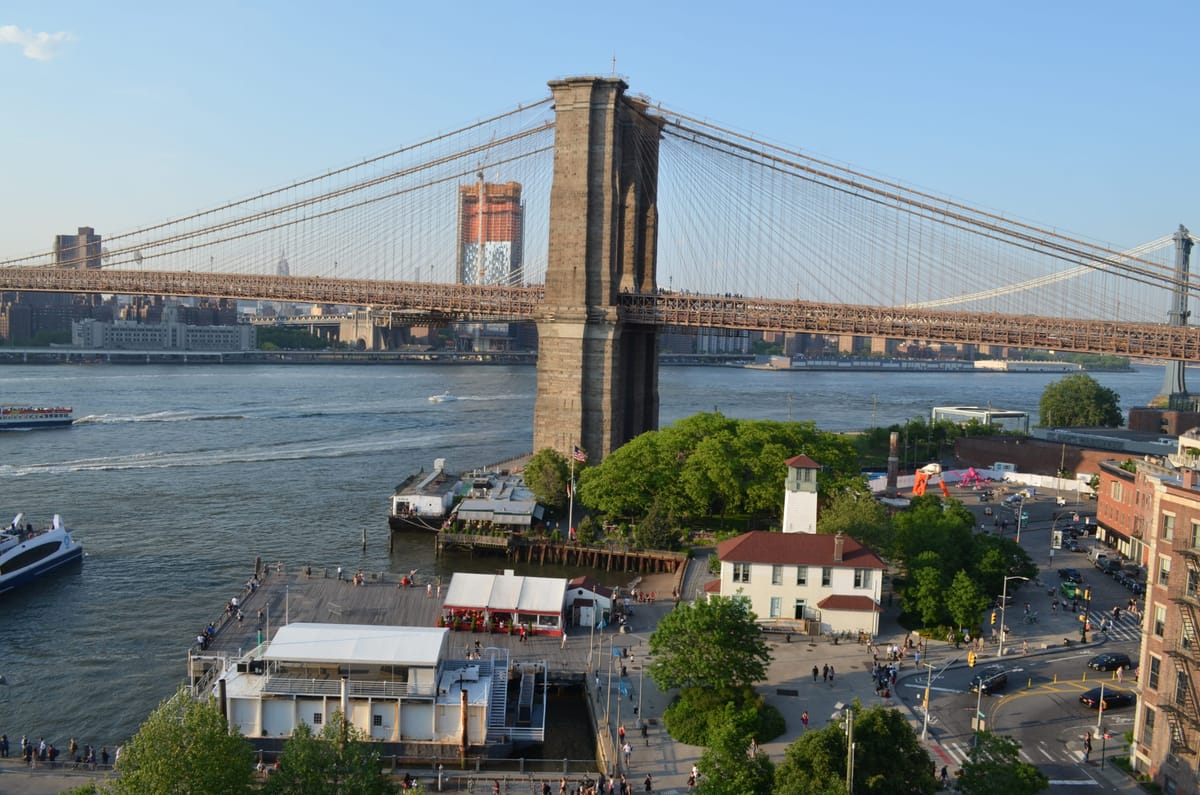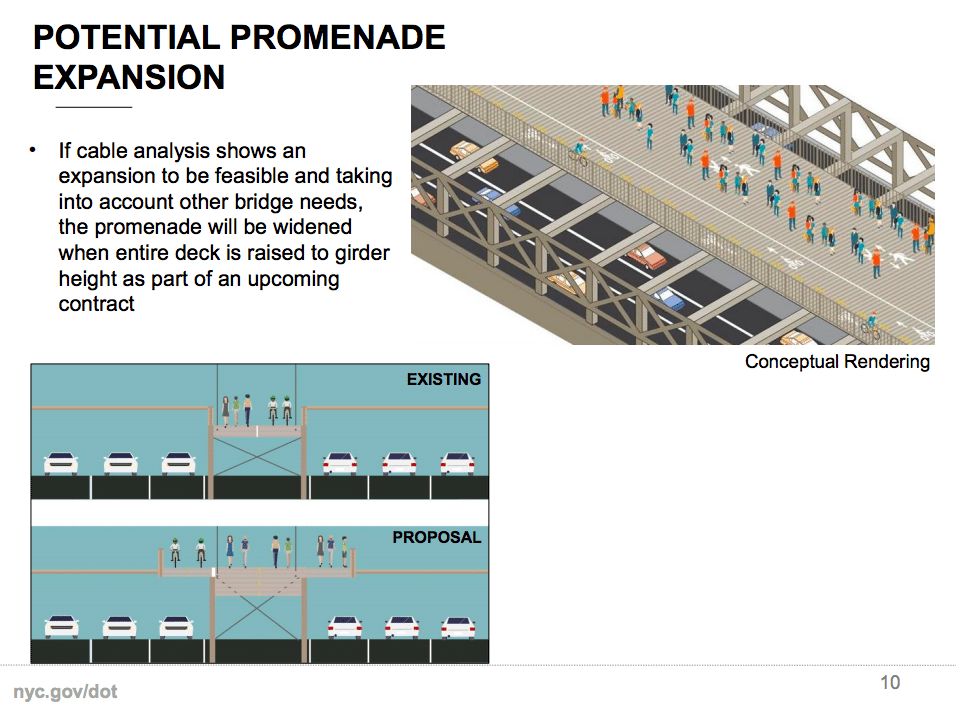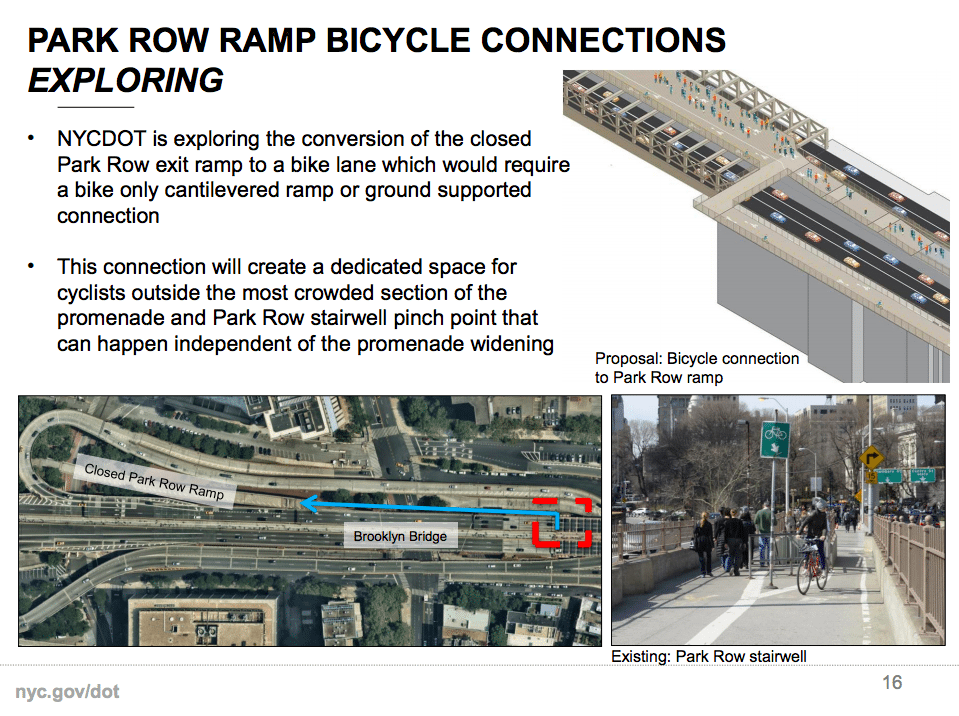DOT Exploring Ways To Ease Congestion on Brooklyn Bridge For Pedestrians And Cyclists

BROOKLYN BRIDGE – Anyone who’s crossed the Brooklyn Bridge in recent years is well aware that despite the breathtaking views, the trip can be a frustrating and slow experience, with thousands of pedestrians filling the pathways and bicyclists trying to maneuver through them.
Opened in 1883, the Brooklyn Bridge is the borough’s number one tourist attraction, featuring six lanes for vehicular traffic and a wooden promenade above shared by pedestrians and bicyclists. Some portions of the promenade get as narrow as 10 feet across, barely wide enough to easily accommodate both walkers and pedalers, the New York Times reports.
The NYC Department of Transportation (DOT) released the Brooklyn Bridge Promendade Recommendation Report last week, focused on relieving overcrowding and improving safety on the iconic bridge’s promenade. DOT is considering various ways to relieve the congestion problems, including expanding the promenade, creating a separate bike-only entrance on the Manhattan side of the bridge, and limiting the number of vendors and areas where they can peddle their goods.

DOT’s Recommendation Report notes that expanding the promenade would bring more visitors to the bridge, adding even more weight, so an inspection of the bridge’s cables would be necessary before any expansion decisions can be made. A full inspection of the cables is scheduled for 2019 and won’t be completed until 2021, Streets Blog reports.
On weekdays, the number of people hoofing it across the bridge has risen from 10,484 in 2011 to more than 13,000 in 2017, according to the Times. From 2008 to 2015, there has been a 275% increase in pedestrian traffic crossing the bridge on weekends and a 104% increase in the number of cyclists, the DOT report notes.
The separate bike-only entrance would be created by transforming a former vehicle exit ramp on Park Row on the Manhattan side, closed following the September 11 attacks, into an elevated lane that would run alongside the bridge, eventually forming an L-shape that connects it to the promenade. This plan would give bicyclists an alternate route from the heavily congested entrance to the bridge and reduce potential conflicts with pedestrians.

While it will take years for the plans to be realized, the Times reports that officials are already working on regulations to limit the number of vendors on the bridge. Vendor tables set up at the entrances of the promenade create bottlenecks, causing pedestrian traffic to slow down and overflow into the bike lane, DOT explains. The agency is exploring appropriate points on the bridge to designate as concession areas.
DOT rejected a plan that would have converted a car lane into a designated bike lane, explaining that this plan would increase congestion for vehicular traffic and create maintenance challenges, emergency access concerns, and a bad cycling experience .
Check out the full NYC DOT Brooklyn Bridge Promenade Recommendation Report.




